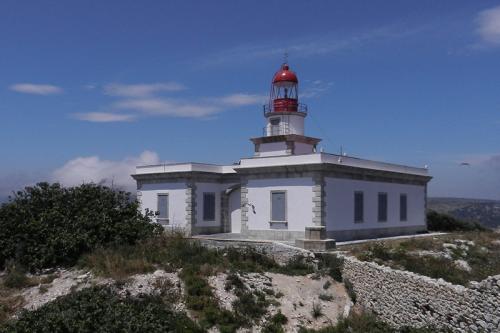This lighthouse, inaugurated on 1 June 1868, is situated on top of Meda Gran island, standing 86 metres above sea level and 10.55 metres above the ground.
The area around the lighthouse is scattered with the ruins of old buildings and serves as a popular nesting site for many seabirds. Its geodesic relevance lies in the fact that it marks the southern boundaries of the beams from two more northerly lighthouses at Roses and on the Cap de Creus, which makes it strategically significant. It also marks the channel that separates the Illes Medes from the coast of Torroella.
It was the last lighthouse opened during the reign of Isabel II, who was a key proponent of the Plan for Lighthouses and Lights along the coast, as just two months later, the liberal revolution broke out, forcing her into exile. This lighthouse was among the first in Spain to operate without a permanent keeper residing on-site. Its maintenance was entrusted to the Maritime Signals technician based in Roses, who travelled by boat every week to replenish the lighthouse's fuel. However, on 29 November 1933, the technician suffered a shipwreck. Due to the distance he had to cover, it was decided that, from then on, the lighthouse's fuel would be supplied from L'Estartit.
In 1982, the lighthouse became one of the first in Spain to be equipped with a solar-powered lighting system.
Video


